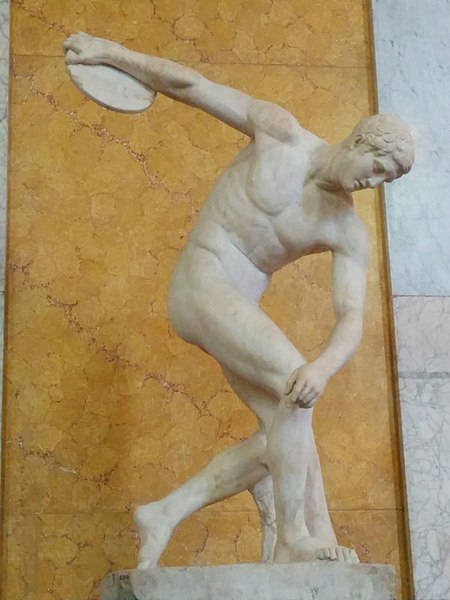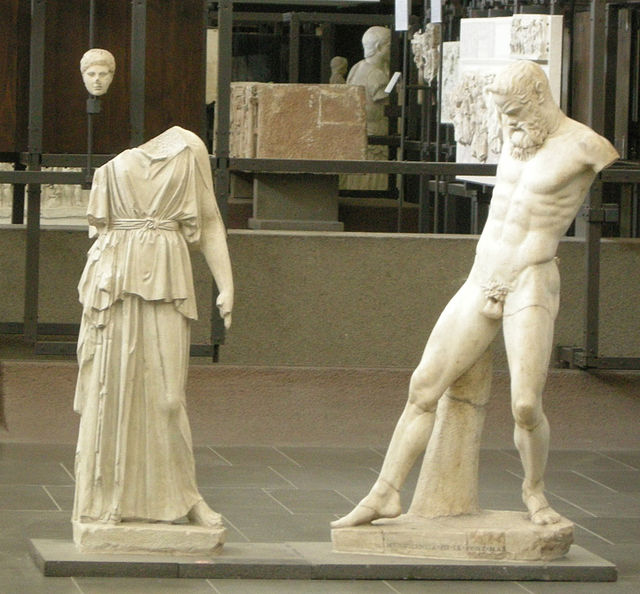Myron of Eleutherae was an Athenian sculptor from the mid-5th century BC. He was born in Eleutherae on the borders of Boeotia and Attica. According to Natural History, a Latin encyclopedia by Pliny the Elder, a scholar in Ancient Rome, Ageladas of Argos was his teacher.
Roman marble copy of Myron's most famous work, the Discobolus. Towneley Marbles, British Museum
Minotaur, from a fountain in Athens, a Roman copy of Myron's lost group of Theseus and the Minotaur, National Archaeological Museum of Athens
Athena and Marsyas, Roman copies, Vatican Museums
Roman copy of Myron's heifer, Capitoline Museums
The Discobolus by Myron is an ancient Greek sculpture completed at the start of the Classical period in around 460–450 BC that depicts an ancient Greek athlete throwing a discus. Its Greek original in bronze lost, the work is known through numerous Roman copies, both full-scale ones in marble, which is cheaper than bronze, such as the Palombara Discobolus, the first to be recovered, and smaller scaled versions in bronze.
Roman bronze reproduction of Myron's Discobolus, 2nd century AD (Glyptothek, Munich)
The discobolus motif on an Attic red-figured cup, c. 490 BC, is static by comparison.
Roman discus thrower from Stabiae, Villa Arianna, 1st century AD
A Discobolus in the National Roman Museum in Palazzo Massimo alle Terme.








